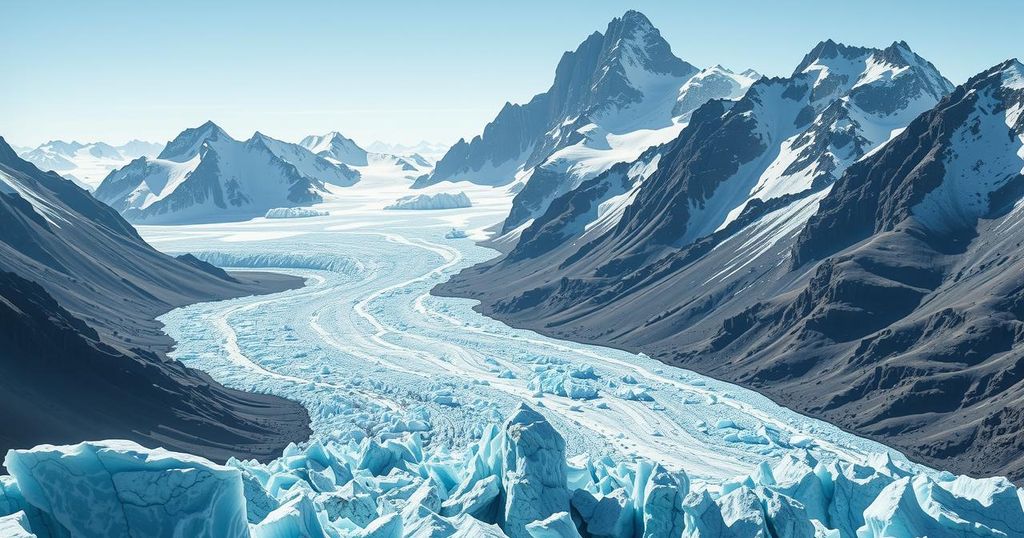Politics
ALPS, ARCTIC, ASIA, CHINA, CHINESE ACADEMY OF SCIENCES, CLIMATE, ENVIRONMENT, GANSU, GLOBAL WARMING, GREENHOUSE GAS EMISSIONS, INVESTMENTS, MEXICO, NORTH AMERICA, NORTHWEST INSTITUTE OF ECO - ENVIRONMENT AND RESOURCES, NORTHWEST INSTITUTE OF ECO - ENVIRONMENT AND RESOURCES OF, QINGHAI, SICHUAN, SOUTH AMERICA, THIRD POLE, TIBET, TIBETAN PLATEAU, UNESCO, XINJIANG, YUNNAN
Sophia Klein
China’s Glacier Area Experiences Significant Shrinkage Due to Climate Change
China’s glacier area has decreased by 26% since 1960, with a significant loss of small glaciers and intensified glacial retreat. Global warming contributes to decreasing freshwater availability and increased environmental disaster risks. China uses technology to combat glacier melting, primarily in its western and northern regions such as Tibet and Xinjiang. The situation reflects a larger global trend of accelerated glacier loss due to climate change, with serious implications for water resources and environmental stability.
Over the past sixty years, China’s glacier area has decreased by 26% due to rapid global warming, according to data released in March. The country has seen the complete disappearance of approximately 7,000 small glaciers, and glacial retreat has become more pronounced in recent years. This information reflects a broader trend of accelerated glacier loss worldwide, with record reductions observed over the last three years, as stated in a UNESCO report.
The diminishing glaciers have far-reaching consequences, resulting in decreased freshwater availability which may lead to increased competition for water resources. Furthermore, this retreat introduces new risks of environmental disasters. Approximately 69,000 glaciers are located mainly in western and northern China, specifically in regions such as Tibet and Xinjiang, along with provinces like Sichuan, Yunnan, Gansu, and Qinghai.
Data from the Northwest Institute of Eco-Environment and Resources indicates that China’s glacier area measured around 46,000 square kilometers in 2020, a decline from 59,000 square kilometers documented between 1960 and 1980. In light of this environmental challenge, China has implemented various technological methods including snow blankets and artificial snow systems to mitigate the effects of glacier melting.
The Tibetan Plateau, recognized as the world’s Third Pole, contains substantial ice reserves within its mountainous terrain. Experts predict that ice loss will continue to increase worldwide, driven by climate change primarily linked to fossil fuel consumption. This trend is expected to worsen environmental, economic, and social issues globally, especially regarding rising sea levels and dwindling water sources as highlighted in the UNESCO report.
In conclusion, China’s glaciers have experienced significant shrinkage due to climate change, with a notable 26% reduction since 1960. The ongoing loss of these vital water reserves poses serious implications for freshwater availability, disaster risks, and global environmental stability. Technological interventions are being employed to address these challenges, yet the situation remains critical as climate change accelerates glacial retreat worldwide.
Original Source: www.tradingview.com








Post Comment